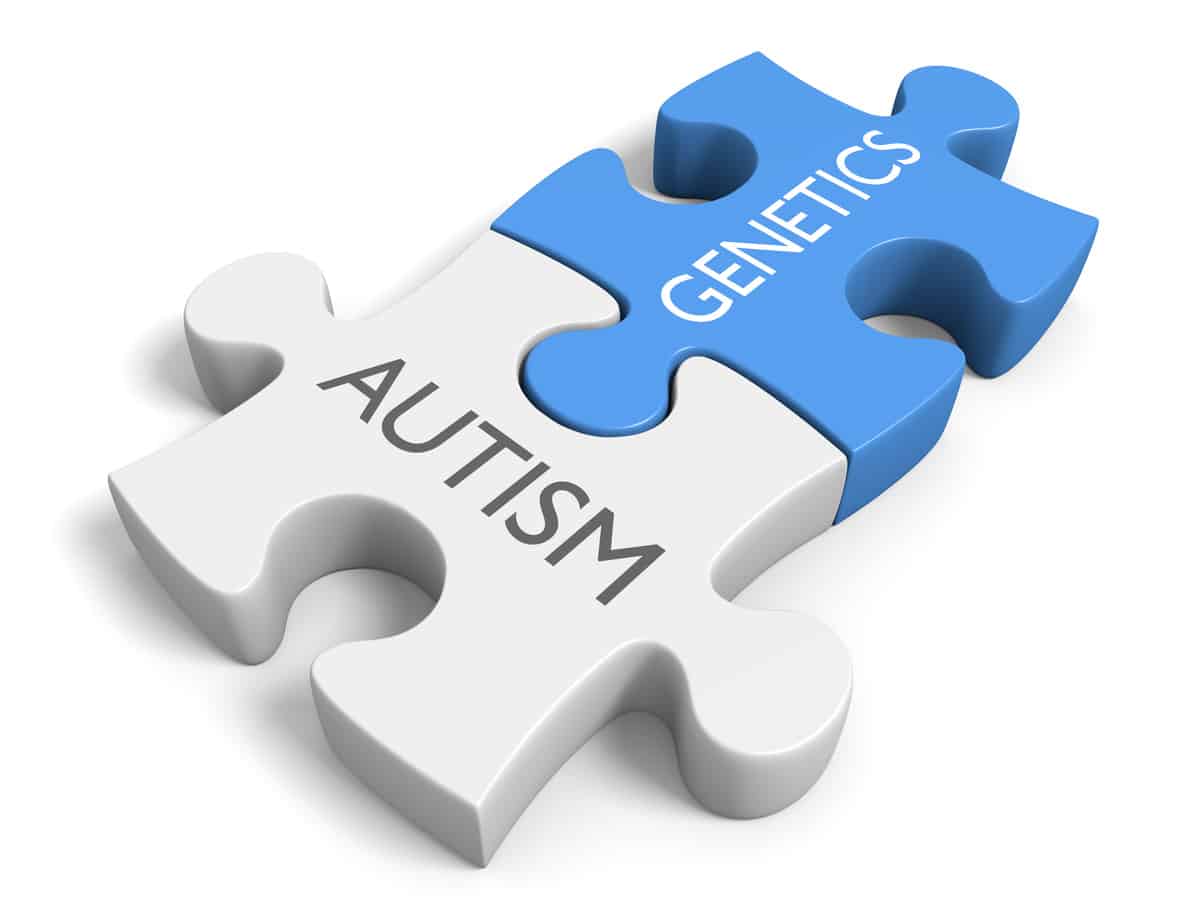 The history of autism is replete with arguments about its underlying causes and treatments—and frequently over the past 50 years, these arguments have involved genetics.
The history of autism is replete with arguments about its underlying causes and treatments—and frequently over the past 50 years, these arguments have involved genetics.
While it is generally accepted that genes play a major and possibly a primary role in autism, we do not yet know how large this role is. It is an important question for us to answer because it has direct implications with respect to prevention as well as intervention. In this editorial, I look at how far we have come in understanding genetic influences on autism and what we still need to learn.

The first major genetics debate
Dr. Bernard Rimland was the first person to popularize the view that genetics play an important role in autism spectrum disorders (ASD). In his 1964 seminal book, Infantile Autism: The Syndrome and Its Implications for a Neural Theory of Behavior, he single-handedly debunked the then-popular theory blaming emotional neglect by parents and argued convincingly that autism has an underlying biological basis. Besides genetics, he postulated that neurology and environmental factors are likely contributors to autism.
About a dozen years later, Folstein and Rutter (1977) published the first convincing data to support a genetic component of autism. Basically, they reported a high prevalence rate of autism in 11 monozygotic twins, (who have essentially a 100% genetic overlap) as compared to a much lower rate in 10 dizygotic twins (who have essentially a 50% genetic overlap).
The current debates
Today, approximately 20% of individuals with ASD have a known genetic autism-related syndrome. These individuals are often referred to as having “syndromic autism.” Autism-linked syndromes include Angelman, Fragile X, Landau-Kleffner, and Rett’s syndromes as well as less common syndromes caused by other mutations.
We do not yet know what role genes play for the remaining 80% of individuals with ASD. They may have yet-to-be-identified genetic syndromes; they may have ASD due to a genetic-environmental interaction; or they may have ASD caused by something entirely unrelated to their genetic makeup.
The debate about the exact role of genetics in autism is currently receiving much media attention. More than 100 genes have been reported to be associated with autism during the past two decades, but there is still no primary “autism gene” or set of “autism genes” that determines with high likelihood whether an individual will be on the autism spectrum.
There is also considerable debate over the role of environmental toxins and how they may interact with gene expression. One theory is that a relatively small number of people are genetically susceptible to relatively low levels of toxic substances that are now common in the environment. Notably, many research studies have reported increased risks of autism near highways with high levels of particulate matter (which includes ammonia, black carbon, mineral dust, nitrates, sodium chloride, and sulfate), as well as near fields sprayed with pesticides. These toxins could cause damage to the neurological, autonomic, metabolic, or immune system (or multiple systems) in genetically vulnerable individuals, increasing the risk for ASD.
A related theory is that some individuals with ASD have a genetic predisposition to certain nutritional deficiencies that make them more prone to developing autism. For example, there is evidence that a number of children with ASD have difficulty metabolizing folate and can benefit significantly from taking supplements in the form of folinic acid.
If a genetic-environmental connection exists, it could help to explain the dramatic increase in the prevalence of autism over the past 50 years. In the early 1970s, autism was diagnosed in about one in two thousand children. Today, the number is about one in fifty-four. While diagnosis has improved significantly, this alone cannot account for such a steep rise in cases.
Given the importance of understanding genetics and the environment, one would think that there would be countless studies investigating both of them simultaneously in the same individuals. Unfortunately, few studies in each subfield have employed this scientific approach, and the results of these studies are mixed. This is most likely due to the researchers investigating a rather wide spectrum of individuals with ASD, an approach that is not likely to lead to consistent data. Furthermore, many of these researchers base their conclusions on correlational analyses; but scientifically speaking, such analyses cannot prove a cause-and-effect relationship.
The best way to resolve this important issue is to conduct relatively complex experimental studies by employing valid measurement tools to properly evaluate genetic and environmental factors in the same individuals. It is also critical that correlational studies be followed up with scientifically controlled experiments.
What we can do while we search for answers
Clearly, it will take time for us to elucidate the role that genetics play in causing or exacerbating autism. Even then, the answers will not be simple, because different genes and different environmental factors will be at play in different people. Fortunately, however, there are steps we can take right now to aid individuals with autism—especially if their symptoms may stem in whole or in part from genetic vulnerability. In particular, there are four areas in which we can focus our efforts:
Nutrition. It is becoming clear that many individuals with autism have nutritional deficiencies, and that some of these may be caused or worsened by genetic vulnerabilities (for instance, defects in metabolizing folate or vitamin B12). In-depth testing of individuals with autism can help to uncover any existing nutritional deficiencies and allow us to address them effectively—whether the causes are genetic or not.
Toxins. Reducing the body burden of toxins in individuals with autism will benefit all of them, but especially those with genetic vulnerabilities that make them more prone to damage from these toxins. In addition to addressing major sources of pollution at the government and industry level, we can take personal action by minimizing the use of toxic chemicals in our own homes.
Microbiome optimization. It is becoming clear that many people—not just those with autism—have genetic vulnerabilities that can affect their gut microbiomes in ways that predispose to disease (see Hall et al., Nature, 2017). While we may not yet understand the role that genes play in this area, groundbreaking research suggests that dietary changes, fecal transplants, and other interventions can help to normalize gut microbes in individuals with autism and gut dysbiosis.
Early intervention. While genetic anomalies may underlie the behaviors and learning problems of many individuals with autism, we now know that early intervention can dramatically benefit children with ASD no matter what the cause.
In short, we have a long way to go before we fully understand how genes influence autism. But we have powerful tools we can use right now to help many individuals on the spectrum thrive and excel—no matter where the roots of their autism lie.
Stephen M. Edelson, Ph.D.
Executive Director, Autism Research Institute
This editorial appeared in Autism Research Review International, Vol. 34, No. 3, 2020
ARI’s Latest Accomplishments
Connecting investigators, professionals, parents, and autistic people worldwide is essential for effective advocacy. Throughout 2023, we continued our work offering focus on education while funding and support research on genetics, neurology, co-occurring medical
Biomarkers start telling us a story: Autism pathophysiology revisited
Learn about emerging research on biomarkers and autism from a recent ARI Research Grant recipient. This is a joint presentation with the World Autism Organisation. The presentation by Dr.
Editorial – Bernard Rimland’s Impact: Sixty Years Since the Publication of ‘Infantile Autism’
In this milestone year of 2024, the Autism Research Institute commemorates the 60th anniversary of Dr. Bernard Rimland’s groundbreaking work, Infantile Autism: The Syndrome and Its Implications for a Neural Theory of




